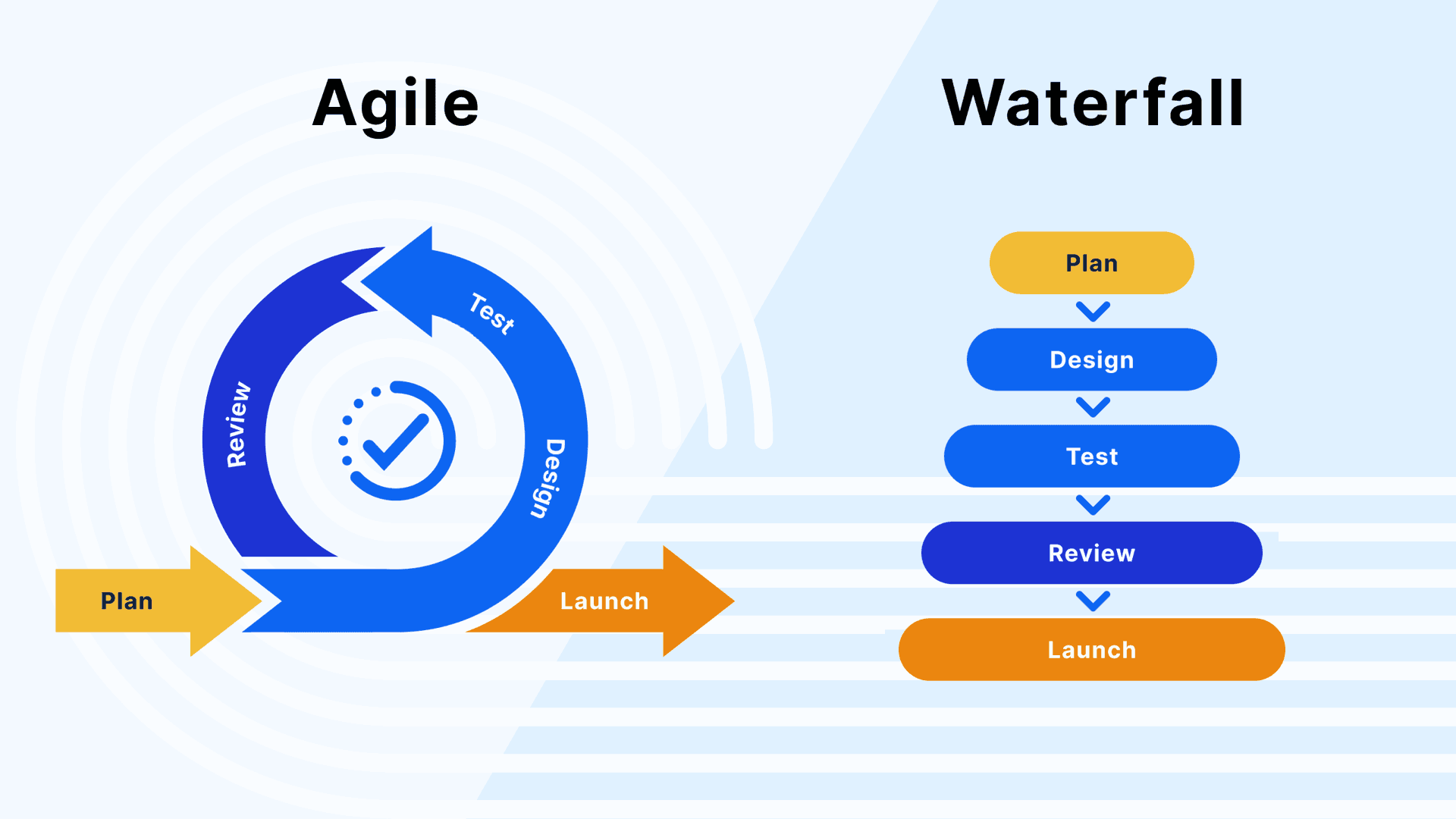PPM
How to Blend PRINCE2, Agile and Scrum Without Losing Control

Build delivery rhythm that speeds outcomes without losing control.
If you've ever felt like your projects “sort of” move but never quite land cleanly, it's usually not because people aren't working hard enough – it's because the way work flows from idea to done isn't designed on purpose.
When governance and agility pull in the same direction, you get three things at the same time:
- •Faster delivery
- •Cleaner decisions
- •Less chaos around month-end, audits, and releases
Treat delivery as a growth lever (not a cost centre), and you'll feel it in customer outcomes, colleague experience, and the bottom line.
To get there, you don't need to pick a side in a methodology war. You need to understand how PRINCE2, Agile and Scrum fit together, and then design something that works in your context.
1) PRINCE2 vs Agile vs Scrum: the short version
| Approach | What it is | When it shines | Watch-outs |
|---|---|---|---|
| PRINCE2 (v7) | Structured method with principles, practices and processes across the full project lifecycle | Multi-supplier change, compliance or higher risk change, exec-level governance | Over-governing small exploratory work |
| Agile (umbrella) | Values and principles for iterative, user-centred delivery | Evolving requirements, learning quickly, high uncertainty | "Agile theatre" – stand-ups but no real iterations or feedback |
| Scrum | Lightweight framework with accountabilities, events, artefacts and commitments | Cross-functional teams delivering complex products or services | Treating events as status meetings, not delivery engines |
Two quick notes that matter in practice:
- •PRINCE2 v7 leans hard into tailoring – it expects you to right-size controls instead of copying a textbook.
- •The Scrum Guide 2020 sharpened transparency with explicit commitments (Product Goal, Sprint Goal, Definition of Done).
In other words: PRINCE2 gives you governance, Agile gives you a mindset, and Scrum gives you a team-level execution pattern. The sweet spot for most organisations is a hybrid of all three.
2) How to choose (and when to go hybrid)
Once you're clear on the basic ingredients, the real question becomes: what does my world actually look like? Regulated? Vendor-heavy? New product? Mixed bag?
Here's a simple way to think about it.
Regulated + vendors + real budgets?
You're probably dealing with multiple suppliers, controls, and audit trails.
- •Lead with PRINCE2 stage control for governance, risk, and decision-making.
- •Integrate Scrum reviews and retrospectives into checkpoints so boards see real increments, not just slideware.
Exploratory product/service?
You're trying to figure out what customers actually want, not just deliver a fixed spec.
- •Lead with Scrum at the team level: clear Product Goal, protected Sprint cadence, and empirical planning.
- •Use PRINCE2 lightly (or not at all) for oversight, but don't let it slow feedback loops.
Mixed portfolio (most real organisations)?
You've got regulatory change, platform work, and new propositions all together.
- •Use PRINCE2 for portfolio and project controls – business cases, stages, risks.
- •Use Scrum for team cadence – planning, reviews, retros, flow.
- •Apply Agile principles across funding, planning, and governance (incremental value, frequent inspection, adaptive plans).
The point isn't to be “pure”. It's to design an operating model where governance, mindset and team execution line up instead of fighting each other.
3) Training that actually changes behaviour
Once you've chosen how you want to work, the next step is simple (but often skipped): helping people actually operate that model day to day.
Good training doesn't drown people in slides; it gives them just enough structure, then lets them try it on real work.
Think in terms of short courses, live practice, and immediate application.
PRINCE2 v7 essentials
Focus on what leaders and PMs genuinely need:
- •Principles, practices, processes – what they really mean and how to tailor them without gold-plating.
- •Crystal-clear roles (Project Board, Project Manager, Team Manager) and how they interact with agile teams using Scrum or Kanban.
The outcome you want: execs and PMs who can govern without micro-managing, and who understand how to blend PRINCE2 with iterative delivery.
Agile & Scrum essentials
For teams, you're aiming for a shared language and a solid delivery rhythm:
- •Accountabilities (Product Owner, Scrum Master, Developers), events, artefacts, and commitments (Product Goal, Sprint Goal, Definition of Done).
- •Backlog hygiene and thin slicing – turning big, vague requirements into small, testable increments.
- •Flow metrics (lead time, cycle time, throughput) so you can diagnose bottlenecks instead of arguing about opinions.
The outcome you want: teams that can plan realistically, deliver in short cycles, and expose real progress to governance.
Popular workshops (where theory meets your reality)
This is where behaviour really shifts – in workshops that use your live work, not invented case studies:
- •Hybrid Governance in Practice – run a real PRINCE2 checkpoint that uses Sprint reviews as evidence, not as a parallel ritual.
- •Story-Slicing Lab – take one chunky requirement and turn it into releasable increments the board can understand.
- •Definition-of-Done Clinic – align QA, security, and compliance so “done” really means “ready for production”, not “dev thinks it's fine”.
Each of these sessions is about one thing: making your chosen hybrid model usable on Monday morning.
4) Consultancy when you need momentum
Training builds capability. But if your delivery landscape is already messy, training alone won't unstick it.
That's where short, targeted consultancy is useful: you keep ownership, but you borrow momentum and expertise to move faster.
Typical focus areas:
- •Discovery & design – Operating model review, governance refresh, and backlog health check. The question here is: does the way work flows today actually match what you say you're doing?
- •Programme stabilisation – Cutover readiness, hypercare playbooks, decision cadence, RAID review. This is about stopping programmes from “wobbling” around go-live.
- •Scrum refresh – Fix mini-waterfalls disguised as Sprints, reset Definition of Done, and restore flow so reviews show increments, not slide decks.
- •Hybrid rollout – Design month-end and quarterly governance that uses Sprint reviews as inputs, rather than duplicating them with separate “status meetings”.
Consultancy should build on your training, not sit beside it – the goal is to make the model real in your toughest projects, then leave the capability behind.
5) A practical 90-day enablement plan
So how do you put all of this together without creating a year-long transformation monster?
One practical pattern is a 90-day enablement plan: enough time to see real change, short enough to feel manageable.
Days 0–10: Baseline
Get a clear picture of where you are now.
- •Portfolio triage – which projects/programmes are healthy, fragile, or stuck?
- •Stakeholder map – who actually makes decisions, who feels the pain?
- •Governance review – what's in place today and what's theatre?
- •Backlog audit – is there a single source of truth, or twenty versions in slides and spreadsheets?
Days 11–30: Train & Pilot
Start small, but visible.
- •PRINCE2 v7 refresher for leads, focusing on tailoring and decision-making.
- •Agile & Scrum bootcamp for one pilot team with a clear Product Goal.
- •Agree how Sprint reviews will feed into governance (e.g. checkpoint evidence).
Days 31–60: Coach & Embed
Don't leave the pilot to sink or swim.
- •Coach the team through three Sprints.
- •Co-run a PRINCE2 checkpoint that uses real increments and data.
- •Publish a lightweight delivery dashboard showing flow, risks, and decisions.
Days 61–90: Scale & Handover
Turn the experiment into a repeatable pattern.
- •Roll the hybrid model to two or three more teams.
- •Refine templates (RAID log, checkpoint pack, Sprint Review checklist, Definition of Done) based on what worked in reality.
- •Run an exec review, agree a quarterly improvement cadence, and hand over playbooks so the organisation can continue without heavy external support.
This isn't the only way to do it, but it's a concrete example of how governance, training, coaching, and consultancy can combine into a single, coherent push.
“It's not about choosing PRINCE2, Agile or Scrum – it's about designing a delivery rhythm where governance and iteration push in the same direction.”
6) FAQs
A few questions that come up repeatedly when organisations start blending PRINCE2, Agile and Scrum:
Is PRINCE2 still relevant if we're going agile?
Yes. Use PRINCE2 for governance and risk (business cases, stages, tolerances) and let teams deliver iteratively with Scrum or other agile methods. PRINCE2 v7 explicitly supports tailoring to context, which is exactly what a hybrid model needs.
Can we mix PRINCE2 and Scrum without confusing everyone?
You can – if you're clear about who owns what. PRINCE2 governs why and whether the work continues; Scrum teams own how the work is delivered Sprint by Sprint. Confusion usually comes from overlapping roles, not from the methods themselves.
Do we need certifications to start?
Certifications help create a shared language, especially for new joiners and leadership. But performance comes from practice, feedback, and coaching. Don't wait for everyone to be certified before you start working differently.
How long should training be?
As a rule of thumb: 1–2 days of focused training for key roles, followed by 4–8 weeks of on-the-job coaching. The coaching is the bit that turns theory into new habits.
7) Next steps (and what to do with this article)
If you've read this far, you're probably recognising some of your own challenges: over-heavy governance, “agile” in name only, or programmes that wobble around go-live.
Three practical next steps you can take from here:
Map your current delivery rhythm
Sketch how work actually flows from idea to done today: who approves, who decides, where it stalls. This gives you a baseline.
Pick one pilot area
Choose a product, programme, or team where you can safely experiment with a hybrid model (PRINCE2 governance + Scrum cadence + agile principles).
Decide what kind of support you need
That might be:
- •A PRINCE2 governance refresh so boards can make faster, cleaner decisions.
- •Agile coaching and Scrum training so teams can deliver in short, honest cycles.
- •Programme stabilisation support for a critical go-live (cutover, hypercare, RAID, decision cadence).
Over time, you can formalise supporting assets – things like a RAID log, checkpoint pack, Sprint Review checklist, and a sharp Definition of Done – but you don't need a library of templates before you start.
The real win is this: a delivery approach where governance, mindset and team practice all tell the same story. Once that's in place, the methods stop being theory and start becoming an advantage.
Ready to reimagine your delivery systems?
Let's connectAuthor



